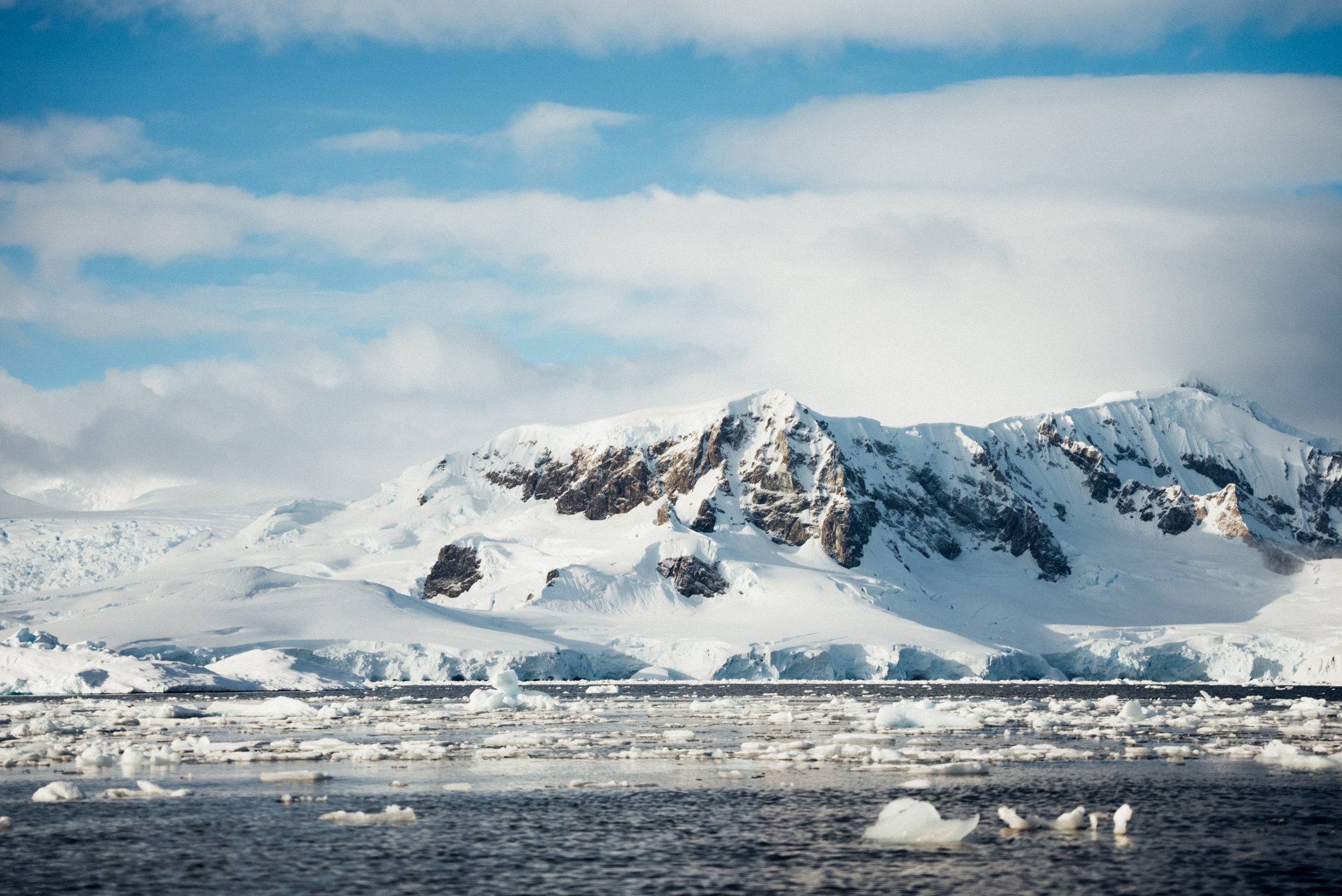The Different Seasons of Antarctica
Antarctic wildlife is at its most active during the austral summer. The beauty and solitude of the Antarctic seas and mountains conceal the frantic activity of the shoreline colonies of birds and mammals. We operate our expedition cruises aboard St Helena during this five-month period, from November to March. Summer arrives first in the South Shetland Islands and spreads southwards along the Antarctic Peninsula.
As the Antarctic year progresses, from spring to autumn, the Peninsula and surrounding islands change in appearance and character each season, offering visitors a different range of spectacular sights and opportunities.
November – December (Spring – Early Summer)
After the winter darkness, spring fever hits Antarctica, and the sun triggers an explosive growth of phytoplankton in areas of mineral upwelling. The phytoplankton provides food for the astronomical swarms of zooplankton, including krill. Krill forms the base of the food chain for squid, fish, and ultimately seabirds, seals, and whales, which flock in to fatten themselves and produce their young.
Crabeater seals are born between September and November.
Elephant seals aggressively guard their harems until December.
The first big whales arrive to feed, including humpback, minke, and southern right whales.
Penguins display amazing courtship rituals, such as nest building, sky-pointing, and stone stealing.
Penguin, petrel, and cormorant eggs are laid during November and December.
Penguin chicks begin to hatch at the end of December in the South Shetland Islands.
Wintering scientists at the research stations welcome the first visitors of the season.
The longest days in December create extended daylight hours — photographs can be taken at midnight!
Last winter’s sea ice sometimes allows spectacular sailing among the floes, with seals everywhere on the ice.
January – February (Summer)
In Antarctica’s warmest months, wildlife activity is in full swing. Most penguin chicks hatch in January — earliest in the South Shetland Islands and later further south on the Peninsula. The frantic activity continues in February as the young get older, bolder, and gather in crèches.
Fur seal and leopard seal pups are visible.
Whale watching reaches its peak in February.
Penguin colonies are at their busiest, fetching krill and feeding chicks.
Receding ice in February allows exploration further south along the Antarctic Peninsula.
The concentration of fur seals increases.
March (Autumn)
Nightly darkness returns as the sun sinks farther below the southern horizon, but temperatures remain above zero, though we may experience a touch of Antarctic winter with night frosts, creating beautiful patterns of thin sea ice on the surface. Snow cover is at its minimum, allowing for easy and extensive walks in the South Shetland Islands.
Penguin chicks are now adolescent and quite curious about visitors.
Adult penguins moult, and the young head to sea.
Receding ice allows exploration as far south as possible along the Antarctic Peninsula.
Spectacular green and pink algae blooms appear on snow slopes and ice cliffs.
Whale watching remains very good.
Falkland Islands and South Georgia
In the Falkland Islands and South Georgia, spring and summer arrive earlier than in the South Shetlands and Antarctic Peninsula, so the breeding activities of seabirds and sea mammals begin earlier there. South Georgia is home to several birds with cycles longer than one year, so eggs and young in king penguin colonies can be found from November to March. November is full spring in South Georgia, comparable to December in the South Shetlands, but without sea ice.

